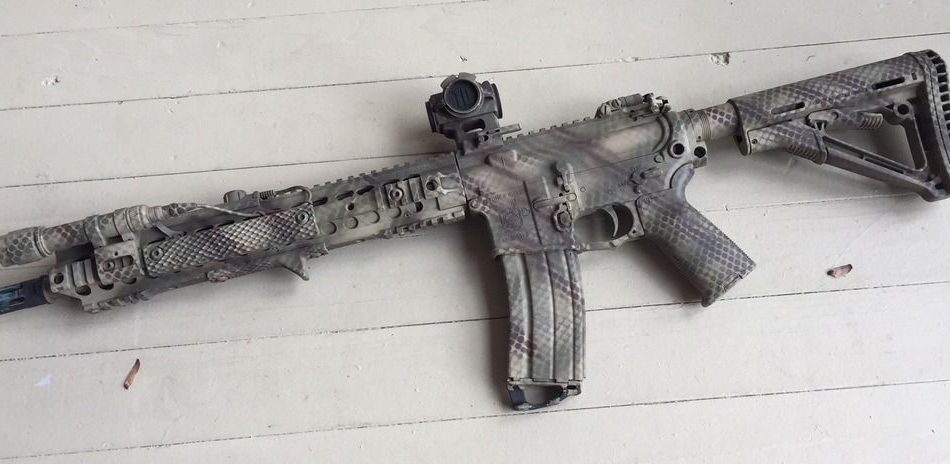I want to thank Dan at http://pleaforwar.com/ for providing the content of this post.
Disclaimer**: I am by no means an expert with painting AR’s. I do, however, have some experience with the application of paint on rifles and figured I can help those who have less experience than I do. If you have anything productive to add to this thread, please feel free to do so.
Over the years I have had a real attraction to rifles that blend in with their environment. I have owned and shot AR’s for a couple of years now, but until recently never considered painting one like the rifles I have always been attracted to.
It isn’t a difficult task to perform by any means. If anything it’s the anxiety of painting a modestly expensive object that makes the task difficult.
First you need to get over the anxiety. Spray paint is by no means permanent nor difficult.
Second, you need to figure out what type of paint matches your surroundings. Desert colors are not the best idea for humid and temperate climates, nor is an arctic pattern great for arid areas like my own. In simple terms, if you live in a place like Maryland or Florida, don’t use my patterns because they won’t work as well for you. Also, you should pick paints that contrast well and distort the lines of the rifle. My first paint job utilized khaki, brown, and green. While these paints made a pattern that was nice up-close, the brown shading took over at farther distances and made the rifle appear brown rather than camouflaged. It’s better than black, but does not effectively camouflage to the full potential.
Third, you need to pick the paint. People with much more experience than I have tend to use quality paint like Aervoe. I have chosen Krylon, as it is easily found and I have seen decent patterns created with it. If you can wait, get the Aervoe. If you are impartial or want to experiment, get the Krylon.
Now you need to setup for the process of painting the rifle.
First you will need to prep the AR with an alcohol pad. Make sure to clean off any dust, sand, grit, etc on the outside of the AR. Then you need to tape off anything that needs to be protected from the paint (i.e. optics, flashlight, magwell). Last, get a paper towel and roll it to where it fits through the muzzle device.

Then you need to give the rifle a good base coat. I use Krylon khaki for my base coat. Give a good eight inches of distance between the can and the rifle. Use swift movements and make sure to cover all the crooks and crannies of the AR. Once finished allow to dry for 10-15 minutes and then flip and repeat.
Base coat:

Now comes the part where you create the pattern. There are several ways you can create a pattern, too include camo netting, leaves, grass, cardboard, etc. I have used two techniques, one that used thin strips of grass and one that uses leaves. I have no photos of using the grass but I do have one for the leaf application.
Stencil:

After spraying the portion not covered by leaves allow the paint to dry for 10-15 minutes.
After with leaf pattern:

After with grass pattern:

Following are some photos of what both patterns look like in my environment.
Leaf pattern in the environment:




Grass pattern in the environment:



